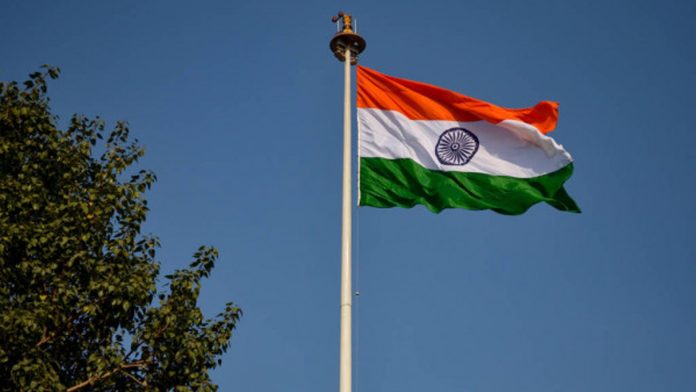The walls of Red Fort have supported a few attacks and seen endless battles. Huge authentic occasions occurred at the sixteenth-century landmark, which has now become inseparable from Independence Day festivities in New Delhi.
Starting around 1947, India’s state heads have raised the tricolor here and addressed the country from the defense neighboring Lahore Gate. However, for what reason is the famous site key to our I-Day merriments?
The revolt of 1857
Worked between 1638 to 1649 by the Mughal sovereign Shah Jahan, the Red Fort was not only a design wonder – it was the seat of force during the Mughal time. It was after the initiation of this castle stronghold that Delhi turned into the capital of the realm and remained so for the rest of the Mughal rule in 1857.
At first filling in as Shah Jahan’s post royal residence, the stronghold got its name from its monstrous red sandstone walls.
Following Aurangzeb’s rule, the gaudiness of the castle began diminishing as the later Mughal rulers couldn’t take on intruders like Nadir Shah of Iran who stole from monstrous goods from the stronghold.
Accordingly from mid to late eighteenth hundred years, assaults from the Marathas, Jats, Sikhs and Gurjars further debilitated the Mughal effect on the royal residence.
By the nineteenth 100 years, the British extended their impact in northern India lastly caught Delhi in 1803. Without losing any additional time, they began assuming command over the Red Fort, realizing great that it was the spot which will present to them a wide difficult situation.
In 1857, defiant sepoys arrived at the entryways of the Red Fort, asking Mughal ruler Bahadur Shah Zafar to lead the uprising against the British. Picture Courtesy: Wikimedia Commons
Also, it did. In 1857, defiant sepoys arrived at the entryways of the Red Fort, asking Mughal ruler Bahadur Shah Zafar to lead the rebellion against the British. Before long, the castle turned into the main issue of the pilgrim organization’s arrangement to smother the insubordination.
The 1857 defiance was the principal significant uprising contrary to provincial rule – the Sepoy Mutiny was the primary proper conflict of Independence. It was during this revolt that the Red Fort arose as a significant image of the Independence development since the royal residence arose as the frontal area of sepoy obstruction against Britishers.
In the wake of stifling the disobedience and recapturing command over Delhi, the British killed the greater part of Bahadur Shah’s children and made the head a jail in his own home. Be that as it may, this was not the finish of it.
Indeed, even after the revolt of 1857, the pioneer rulers annihilated the inward designs of the Red Fort. Valuable work of art, stones and gems were plundered from the castle and Mughal structures like the array of mistresses courts, the illustrious store rooms and kitchens were vandalized.
History specialist KN Panikkar let The Wire know that even as a disappointment, the 1857 revolt filled in as a wellspring of motivation for the opportunity battle.
Indian National Army and Red Fort
The scandalous Indian National Army (INA) preliminaries welcomed back the focus on Red Fort.
As per Amar Farooqui, an antiquarian and the creator of Zafar and The Raj, Subhas Chandra Bose, who headed INA, summoned the Red Fort in his popular call Challo Dilli, as per a report in The Wire. Bose or ‘Netaji’, as he was broadly called, said, “Our undertaking won’t end until our enduring legends hold the triumph march on the burial ground of the British Empire, at the Lal Quila, the Red Fort of old Delhi.”
India’s state leaders have raised the Tricolor here and addressed the country from the defense contiguous Lahore Gate at Red Fort. Picture Courtesy: Wikimedia Commons
From 1945 to 1946, Red Fort was picked as the area to lead the court military of three officials of the INA – Shah Nawaz Khan, Prem Sehgal and Gurbaksh Singh Dhillon. As per a report in The Print, the officials were charged for “pursuing a conflict against the lord” as they had changed their loyalty during the Second World War. At first battling for the British reason, a great many Indian authorities joined the recently comprised INA and helped the Japanese to battle the English.
Because of the preliminaries, fights and exhibits were coordinated the nation over. These fomentations further set the Indian Independence development.
The cross country crusade that was pursued for the arrival of the officials further supported the public view of the Red Fort as an image of hostile to pilgrim obstruction.
An inheritance abandoned by Nehru
At long last in 1947, as India’s most memorable prime Jawaharlal Nehru supplanted the pilgrim banner with the Indian National banner, the Red Fort established its place in present day history.
It’s been 75 years. From that point forward each top state leader has raised the public banner here and given a discourse from its defense. It has now turned into an Independence Day custom.
Hundreds and thousands of individuals assembled to hear the country’s most memorable PM talk and celebrate opportunity.


